Various historic finds have been unearthed in the area around Mold, the most important being a beautifully decorated gold cape. The cape is now in the British Museum, with a copy displayed in Mold Heritage Centre. A stone tablet marks the place where the original cape was discovered. The existing settlement of Mold dates from Norman times, when a castle was built on Bailey Hill, probably by Robert de Montalt, Lord of Mold. It is thought that the name ‘Mold’ is derived from the name ‘Montalt’, in Normandy.
Illustrations and text about lords and ladies.
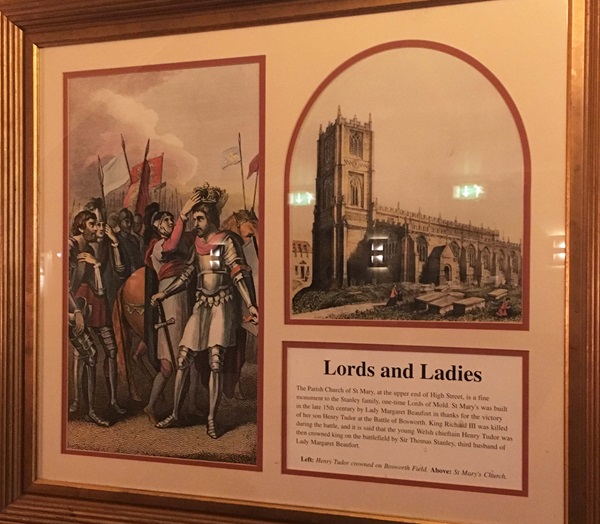
The text reads: The Parish Church of St Mary, at the upper end of High Street, is a fine monument to the Stanley family, one-time Lords of Mold. St Mary’s was built in the late 15th century by Lady Margaret Beaufort in thanks for the victory of her son Henry Tudor at the Battle of Bosworth. King Richard III was killed during the battle, and it is said that the young Welsh chieftain Henry Tudor was then crowned King on the battlefield by Sir Thomas Stanley, third husband of Lady Margaret Beaufort.
Left: Henry Tudor crowned on Bosworth Field
Above: St Mary’s Church.
Photographs, a print and text about paintings, poems & hymns.
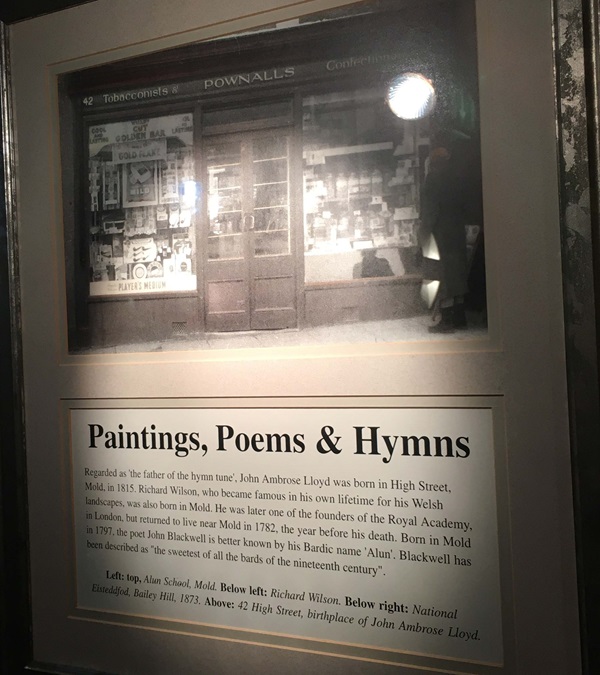
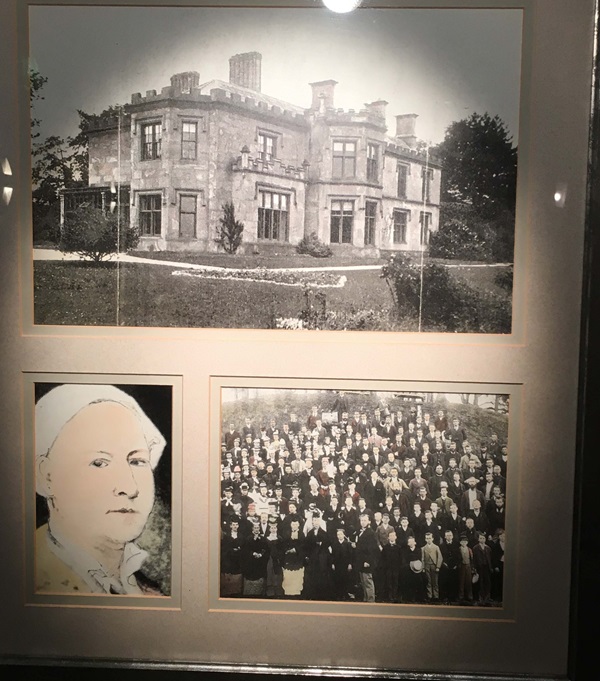
The text reads: Regarded as ‘the father of the hymn tune’, John Ambrose Lloyd was born in High Street, Mold, in 1815. Richard Wilson, who became famous in his own lifetime for his Welsh landscapes, was also born in Mold. He was later one of the founders of the Royal Academy, in London, but returned to live near Mold in 1782, the year before his death. Born in Mold in 1797, the poet John Blackwell is better known by his Bardic name ‘Alun’. Blackwell has been described as “the sweetest of all the bards of the nineteenth century.”
Left: top, Alun School, Mold
Below left: Richard Wilson
Below right: National Eisteddfod, Bailey Hill, 1873
Above: 42 High Street, birthplace of John Ambrose Lloyd.
A pint and text about Mold Cross.
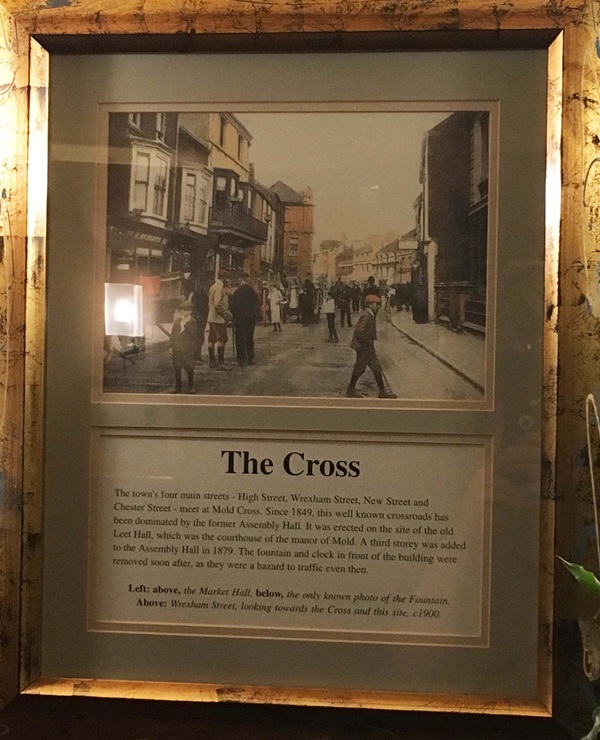
The text reads: The town’s four main streets – High Street, Wrexham Street, New Street and Chester Street – meet at Mold Cross. Since 1849, this well-known crossroads has been dominated by the former Assembly Hall. It was erected on the site of the old Leet Hall, which was the courthouse of the manor of Mold. A third storey was added to the Assembly Hall in 1879. The fountain and clock in front of the building were removed soon after, as they were a hazard to traffic even then.
Left: above, the Market Hall, below, the only known photo of the Fountain
Above: Wrexham Street, looking towards the Cross and this site, c1900.
Prints and text bout working lives in Mold.
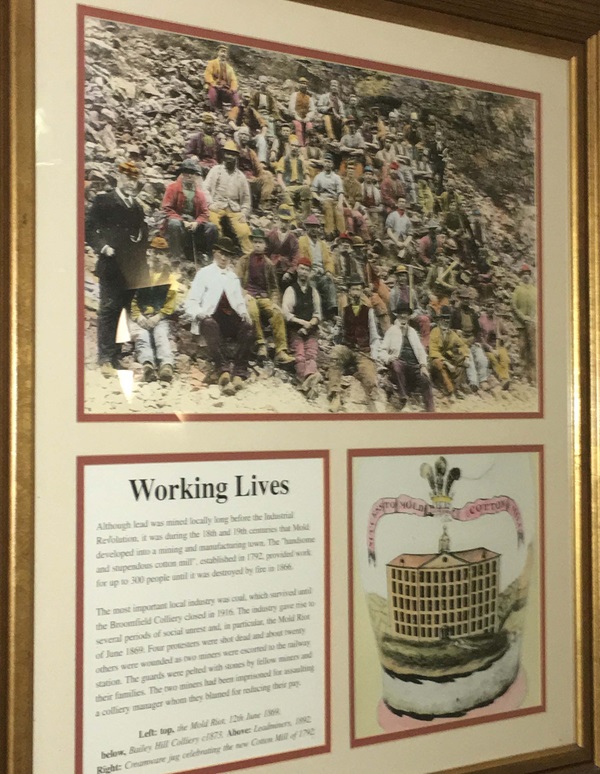
The text reads: Although lead was mined locally long before the Industrial Revolution, it was during the 18th and 19th centuries that Mold developed into a mining and manufacturing town. The “handsome and stupendous cotton mill”, established in 1792, provided work for up to 300 people until it was destroyed by fire in 1866.
The most important local industry was coal, which survived until the Broomsfield Colliery closed in 1916. The industry gave rise to several periods of social unrest and, in particular, the Mold Riot of June 1869. Four protesters were shot dead and about twenty others were wounded as two miners were escorted to the railway station. The guards were pelted with stones by fellow miners and their families. The two miners had been imprisoned for assaulting a colliery manager whom they blamed for reducing their pay.
Left: top, the Mold Riot, 12 June 1869, below, Bailey Hill Colliery, c1873
Above: Lead miners, 1892
Right: Creamware jug celebrating the new Cotton Mill of 1792.
A print and text about Daniel Owen.
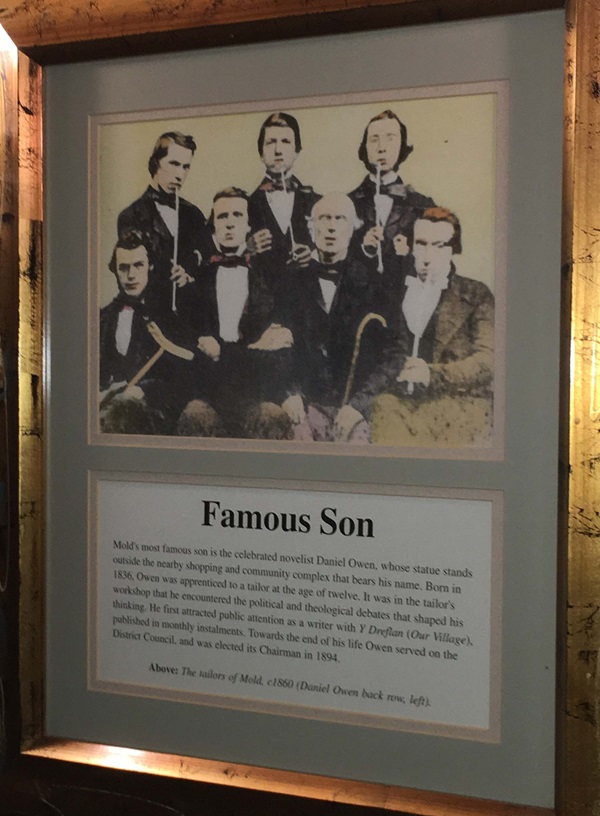
The text reads: Mold’s most famous son is the celebrated novelist Daniel Owen, whose statue stands outside the nearby shopping and community complex that bears his name. Born in 1836, Owen was apprenticed to a tailor at the age of twelve. It was in the tailor’s workshop that he encountered the political and theological debates that shaped his thinking. He first attracted public attention as a writer with Y Dreflan (Our Village) published in monthly instalments. Towards the end of his life Owen served on the District Council, and was elected its chairman in 1894.
Above: The tailors of Mold, c1860 (Daniel Owen back row, left).
A view from Bailey Hill.
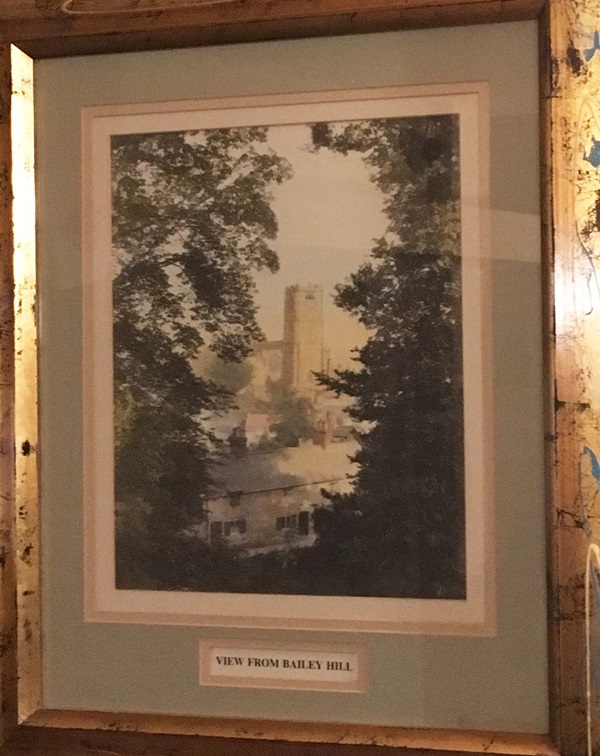
A print of Saint Mary’s Parish Church.
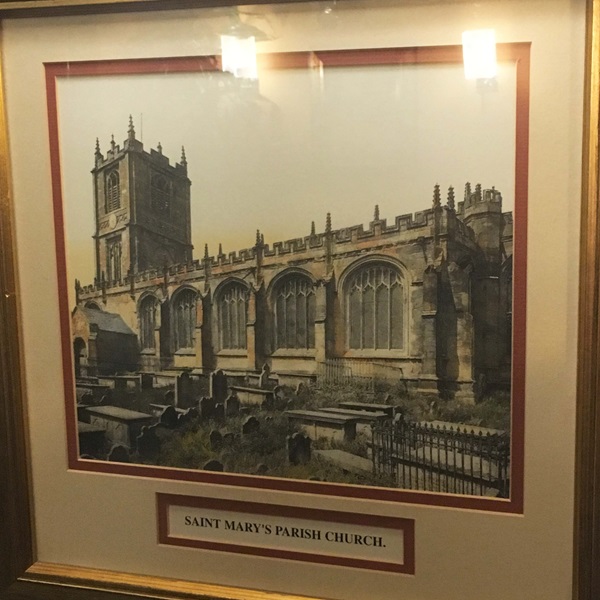
A print of Alyn Tinplate Company, 1881.
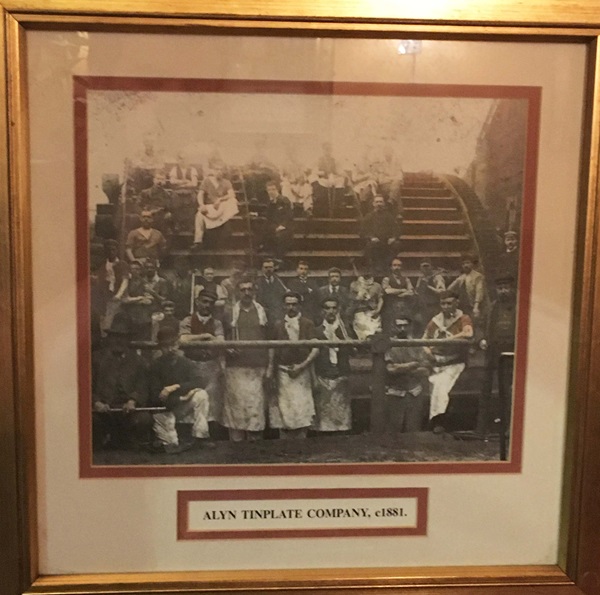
External photograph of the building – main entrance.
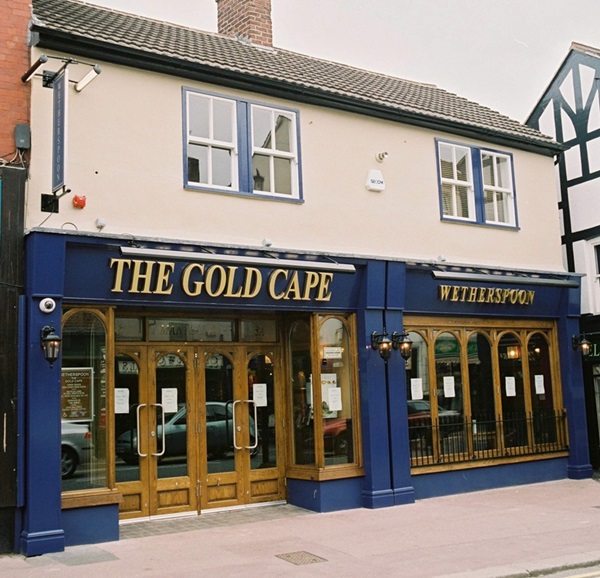
If you have information on the history of this pub, then we’d like you to share it with us. Please e-mail all information to: pubhistories@jdwetherspoon.co.uk